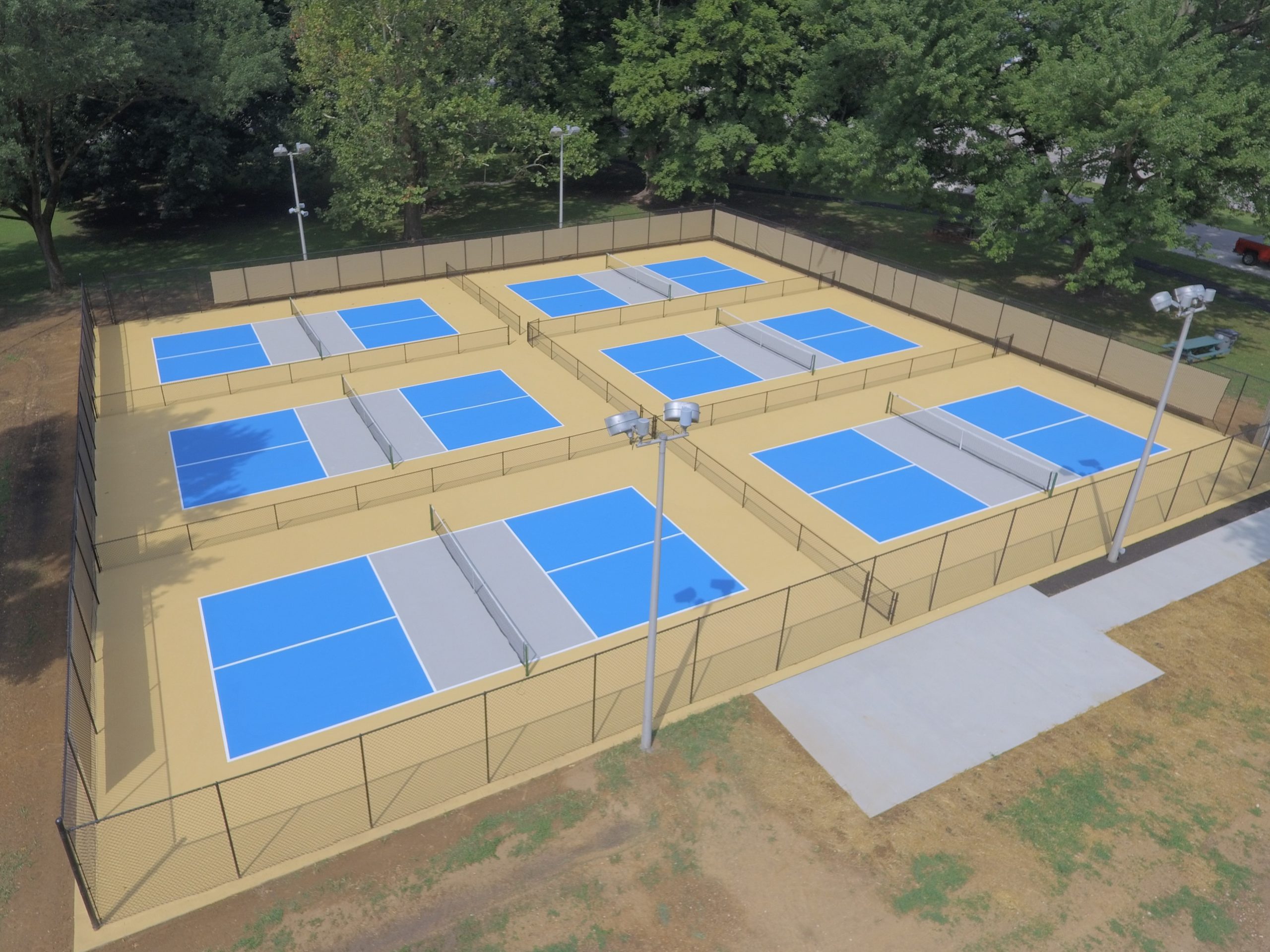Comprehensive Guide to Pickleball Judiciaries Style & Building And Construction in Illinois and Midwest
Key Consider the Building And Construction of Pickleball Judiciaries: From Site Selection to Final Coatings
The building and construction of pickleball courts encompasses a series of vital aspects, beginning with the selection of an ideal website that stabilizes access with ecological considerations. Necessary components such as court dimensions, surface materials, and drain systems dramatically influence not just the top quality of play yet also the long life of the center. Attention to illumination and ending up touches can raise the total experience for gamers and viewers alike. Understanding exactly how each of these elements interrelates might expose understandings that are typically forgotten, prompting a more detailed exam of ideal practices in court building.
Website Choice Standards
When starting the building of pickleball courts, it is important to nail down the website choice criteria that will ensure ideal playability and access. The area has to be quickly obtainable for players, ideally positioned near household areas or recreation center, to motivate involvement.
In addition, the surface needs to be degree and steady, as uneven ground can result in safety hazards and affect gameplay. Sufficient water drainage is also vital; choosing a website with excellent water overflow will help keep court conditions throughout damaging weather.
One more crucial consideration is the accessibility of utilities. Access to electrical power and water is necessary for lighting and maintenance objectives. Additionally, closeness to car parking facilities is essential, assisting in simple accessibility for gamers and viewers alike.
Ecological factors can not be ignored; all-natural color from trees can boost gamer convenience, while exposure to dominating winds might disrupt play. Zoning policies and community support ought to be considered to guarantee that the project straightens with local guidelines and receives the support it requires for effective application. By thoroughly assessing these requirements, stakeholders can produce a welcoming and practical setting for pickleball enthusiasts.
Court Capacities and Format
To make sure optimal gameplay and adherence to guidelines, the dimensions and design of pickleball courts should be meticulously specified. A conventional pickleball court determines 20 feet in width and 44 feet in size for both singles and doubles play. The suggested design includes a non-volley area, commonly referred to as the "kitchen area," expanding 7 feet from the internet on either side. This area is vital, as it influences gamer positioning and shot choice - Illinois and midwest.
The net elevation is established at 36 inches at the sidelines and 34 inches at the center, creating a small dip that impacts sphere trajectory. Court markings are just as important; lines must be 2 inches broad and distinctive in color to ensure exposure.
Additionally, a buffer area bordering the court is advisable, normally extending 5 to 10 feet past the sidelines and baselines to fit players' motions and enhance safety and security. Appropriate design and dimensions not just ensure conformity with official regulations however additionally enhance the overall having fun experience, fitting both entertainment and affordable play. Cautious planning in these areas is extremely important to the effective building of pickleball courts.
Surface Area Product Options
Picking the appropriate surface area material for pickleball courts is important for making sure optimum gamer efficiency and security. The selection of surface can substantially impact gameplay, consisting of sphere bounce, grip, and gamer convenience.
There are a number of alternatives readily available, each with its distinct attributes. Asphalt is a prominent choice due to its sturdiness and reduced upkeep needs. It offers a solid playing surface area that can withstand numerous weather condition conditions but may require regular resurfacing.
Concrete is one more widely used material, providing superb durability and a smooth coating. It enables constant sphere bounce however can be difficult on players' joints, making it much less desirable for long-lasting play without appropriate cushioning.
For those seeking boosted comfort and shock absorption, supported acrylic surfaces present a feasible alternative. These surface published here areas combine a base layer with an acrylic overcoat, supplying boosted traction and a softer feel, which is advantageous for lowering the danger of injuries.
Last but not least, artificial grass is gaining grip, specifically for multi-purpose centers. Its adaptability and lower maintenance requires make it an attractive option, though it may not offer the very same sphere response as standard tough courts. Mindful consideration of these options will make web certain an optimal having fun environment.
Water Drainage and Illumination Factors To Consider
Appropriate drainage and effective lights are vital parts in the building of pickleball courts, significantly affecting both playability and safety. Sufficient drainage systems stop water build-up, which can lead to unsafe surfaces and damages to the court structure.
Lighting is equally critical, especially for courts intended for night use. Proper illumination boosts visibility, ensuring that gamers can see the ball plainly and minimizing the threat of accidents. The placement of lighting fixtures ought to be strategically prepared to get rid of darkness and offer even distribution of light across the court. LED lights are suggested for their power performance and longevity, using bright lighting while reducing functional costs.

Final Coatings and Maintenance
After resolving drain and lighting considerations, focus turns to the final finishes and continuous maintenance of pickleball courts. Common alternatives include acrylic layers and specialized sports surface areas that give ideal traction and padding.

Seasonal upkeep could include resurfacing every couple of years, depending upon usage and ecological aspects. Appropriately preserving webs, court lines, and surrounding areas is similarly vital to give a safe and satisfying playing experience. By buying top quality surfaces and adhering to an organized upkeep routine, facility proprietors can ensure their pickleball courts remain in exceptional problem for many years to come.
Final Thought
In conclusion, the successful building and construction of pickleball courts hinges on meticulous focus to numerous essential variables. Top quality coatings and a robust upkeep routine are essential for protecting the court's problem, improving the general experience for gamers my explanation and spectators alike.